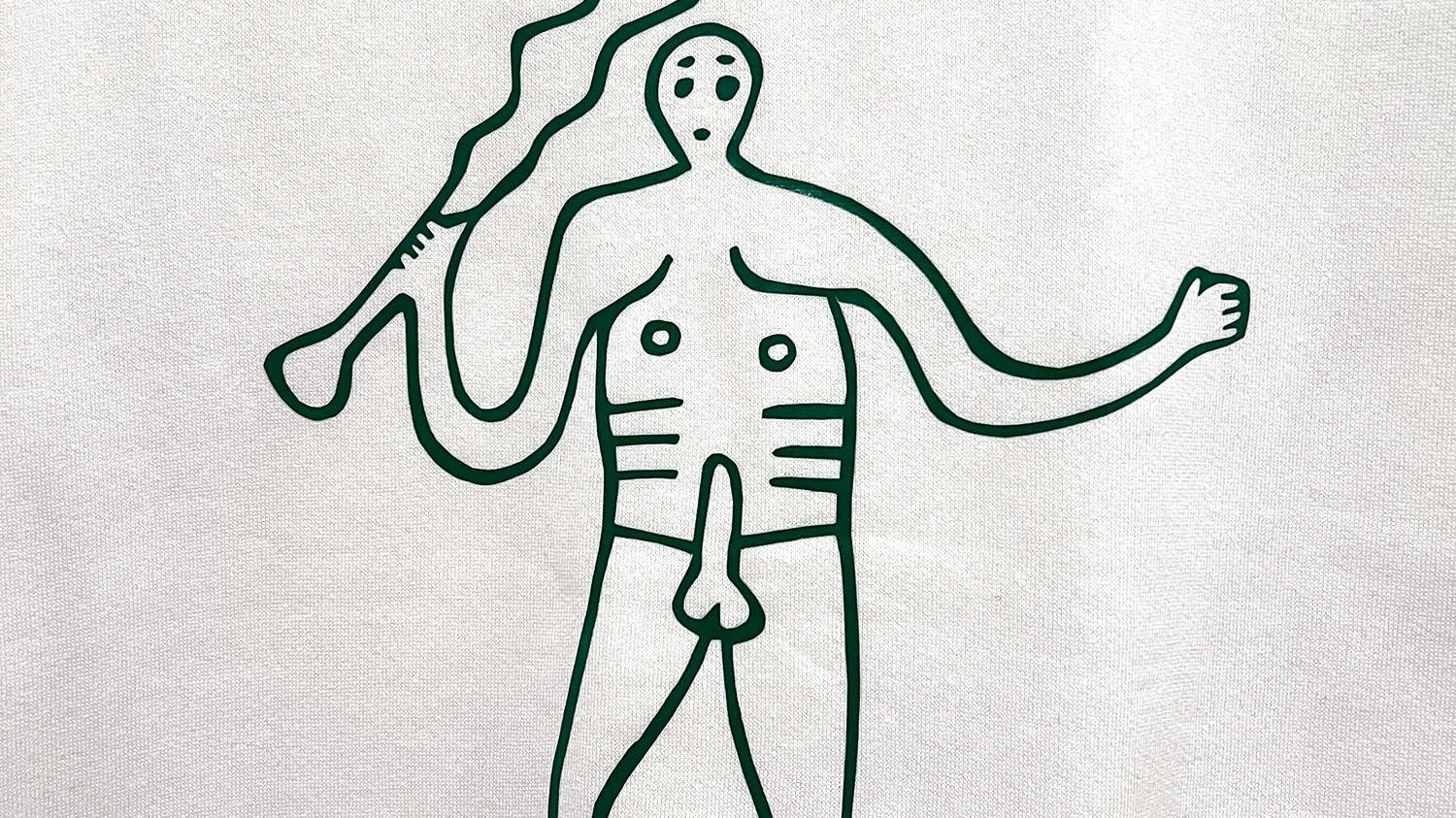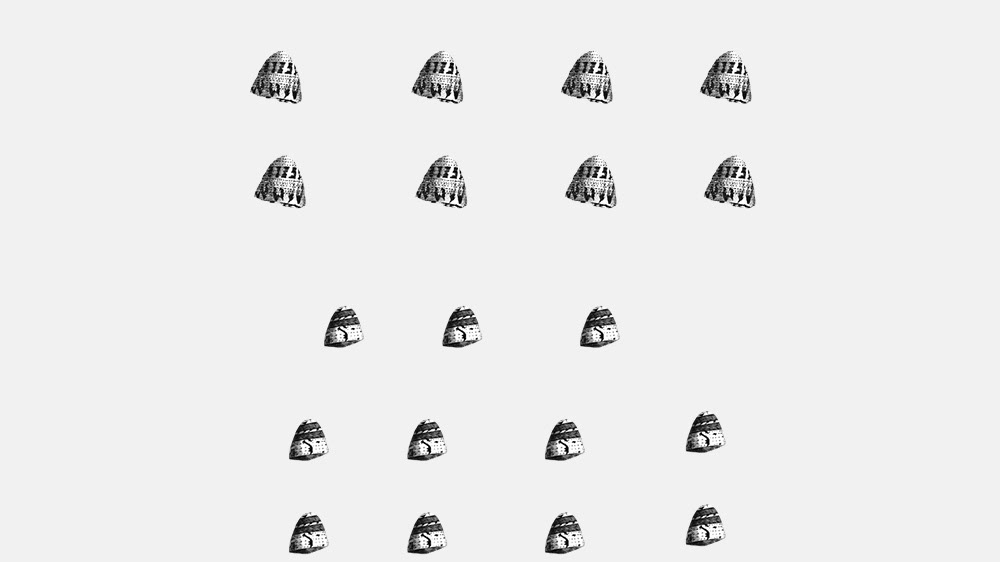Sergei Sviatchenko created a collection of 31 collage works, drawing upon photographs taken
by Noriko Okaku in Katsurao Village, Fukushima in 2022.
2022年に福島県葛尾村で尾角典子によって撮影された写真を基に、
セルゲイ・スヴィアチェンコは31点のコラージュ作品を制作しました。
Digital Prints on Photographic paper, C-prints, 297x210mm
*need to confirm this with Sergei
"Nowhere Everywhere" (2022) is a work created by collaging photographs of Katsuo Village taken by Okaku with Sviatchenko's unique perspective. The actual photograph presents a landscape that is ubiquitous and part of our collective recognition of landscapes as humans. However, upon closer inspection, the collage transforms the scenery of Katsuo village into a peculiar landscape, causing a confusion between our experienced reality and the intersection of the collage with reality. The work is connected to events in Fukushima, Chernobyl, Hiroshima, Nagasaki, Ukraine, and poses the question of whether we are inside or outside the mosquito net of these events.
「Nowhere Everywhere」(2022) は、尾角が撮影した葛尾村の写真をSviatchenkoが独自の視点でコラージュした作品です。実際の写真はどこにでもあるような風景で、人類が共通して持っている景観認識でもあります。しかし、よく見るとコラージュにより葛尾村の風景が異様な風景に変形し、現実との交差により私たちの経験する現実と混乱が生じます。作品は福島、チェルノブイリ、広島、長崎、ウクライナなどの出来事と結びつき、私たちが出来事の蚊帳の中にいるのか外にいるのかを問いかけます。


<Okaku’s note>
In April 2022, I visited Katsuo village in Fukushima Prefecture. The rural landscape was familiar, but the rice paddies had been excavated by decontamination efforts and were a step lower than usual, with no crops planted and brown soil spread out. Large equipment for measuring radiation blended into the scenery, and the unique landscape of Katsuo village spread out before me. It was a landscape that seemed to be everywhere and nowhere at the same time. It was unique to Katsuo village, yet it also seemed like a common sight. I didn't know what I was afraid of, and reality and experience intersected and confused me. I didn't know whether I was an outsider or insider in Fukushima, Chernobyl, Hiroshima, Nagasaki, Ukraine, but a familiar landscape spread out before my eyes.
The familiar scenery distorts slightly,
The ordinary places reveal an eerie appearance,
It is inextricably linked, beautiful yet terrifying
<尾角の滞在記憶>
2022年4月、福島県葛尾村を訪れた。よく見るような田舎の風景には除染により田んぼがえぐられ、普通より一段低く、作物は植えられておらず、茶色い土の田んぼが広がっていた。放射線を測る大きな機材が風景に溶け込んでおり、葛尾村特有の風景が拡がっていた。どこにでもあるようで、どこにでもない風景。葛尾村特有のようで、どこにでもありそうな風景が拡がる。自分は何を恐れているのかわからず、現実と経験が交差し混乱した。福島、チェルノブイリ、広島、長崎、ウクライナ、蚊帳の中なのか外なのかわからないが、親しみのある風景が目の前に広がっていた。
見慣れた風景が少し歪み、
どこにでもある場所が
どこにでもない異様な姿を見せる。
それは表裏一体で。美しくもあり、恐ろしくもある。
A short description of the work
Sergei Sviatchenko was born in Ukraine in 1952 and studied architecture in Kiev before immigrating to Denmark in the 1990s, where he continues to work as an artist. Noriko Okaku, on the other hand, was born in Japan in 1979, studied art and animation in London, and currently leads a life shuttling between London and Japan.
The two met in 2010 and bonded over collage as a common language, continuing to work together. They have a common denominator in the fact that they come from countries that have suffered from man-made disasters, such as the Chernobyl and Fukushima nuclear disasters, atomic bombings in Hiroshima and Nagasaki, and wars in Ukraine and Russia. However, neither of them has directly experienced these events as a local, so they both possess the sense of being both insiders and outsiders. In fact, Sergei completed this work remotely without visiting Fukushima.
By focusing on this perspective and portraying places that are "everywhere (but) nowhere," they remind us that we are not just mere observers but active participants in these events, prompting us to engage in dialogues with ourselves and society. This is related to the fact that the two artists are both citizens of their respective countries but also simultaneously outsiders to the events that occurred in Japan and Ukraine.
Sergei Sviatchenkoは1952年にウクライナで生まれ、キエフで建築を学んだ後、1990年代にデンマークに移住し、アーティストとして活動を続けています。一方、Noriko Okakuは1979年に日本で生まれ、ロンドンでアートとアニメーションを学んだ後、現在はロンドンと日本を行き来する生活を送っています。2人は2010年に出会い、コラージュを共通の言語として意気投合し、共同作業を続けてきました。彼らには、チェルノブイリや福島における原発被害、広島や長崎の原爆、ウクライナやロシアでの戦争など、人為的な被害を受けた国々の国民という共通点があります。しかし、2人ともこれらの出来事を現地の人として直接経験していないため、 自国民でありながら外部者でもあるという「はざま」の感覚も同時に持ち合わせています。実際セルゲイは福島に訪れることなく、遠隔でこの作品を完成させました。この視点に注目し「どこにでもありそうでどこにもない」場所を描く事で、我々が傍観者ではなく、体験している者であることを思い起こさせ、社会と自分との対話を促します。それはアーティスト二人が日本とウクライナで起きた出来事に対し、自国民であり、同時に傍観者でもあったという事実に関連しています。







